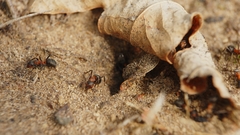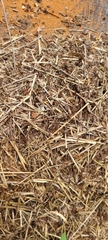Formica rufa: taxon details and analytics
- Domain
- Kingdom
- Animalia
- Phylum
- Arthropoda
- Class
- Insecta
- Order
- Hymenoptera
- Family
- Formicidae
- Genus
- Formica
- Species
- Scientific Name
- Formica rufa
Summary description from Wikipedia:
Formica rufa
Formica rufa, also known as the red wood ant, southern wood ant, or horse ant, is a boreal member of the Formica rufa group of ants, and is the type species for that group, being described already by Linnaeus. It is native to Eurasia, with a recorded distribution stretching from the middle of Scandinavia to the northern Iberia and Anatolia, and from Great Britain to Lake Baikal, with unconfirmed reportings of it also to the Russian Far East. There are claims that it can be found in North America, but this is not confirmed in specialised literature, and no recent publication where North American wood ants are listed mentions it as present, while records from North America are all listed as dubious or unconfirmed in a record compilation. The workers' heads and thoraces are colored red and the abdomen brownish-black, usually with dark patches on the head and promensonotum, although some individuals may be more uniform reddish and even have some red on the part of the gaster facing the body. In order to separate them from closely related species, specimens needs to be inspected under magnification, where difference in hairiness are among the telling characteristics, with Formica rufa being hairier than per example Formica polyctena but less hairy than Formica lugubris. Workers are polymorphic, measuring 4.5–9 mm in length. They have large mandibles, and like many other ant species, they are able to spray formic acid from their abdomens as a defence. Formic acid was first extracted in 1671 by the English naturalist John Ray by distilling a large number of crushed ants of this species. Adult wood ants primarily feed on honeydew from aphids. Some groups form large networks of connected nests with multiple queen colonies, while others have single-queen colonies.
...Formica rufa in languages:
- Bokmål
- rød skogmaur
- Bokmål
- røde skogsmyrer
- Danish
- Rød skovmyre
- Danish
- Røde skovmyrer
- Dutch
- Rode bosmieren
- English
- rufa-group Wood Ants
- French
- Fourmis rousses
- German
- Rote Waldameisen
- Hungarian
- Erdei vöröshangyák
- Russian
- Красные лесные муравьи
- Swedish
- Röda skogsmyror
Images from inaturalist.org observations:
We recommend you sign up for this excellent, free service.
Parent Taxon
Sibling Taxa
- Formica adelungi
- Formica aseta
- Formica aterrima
- Formica breviscapa
- Formica californica
- Formica cinerea
- Formica clarissima
- Formica dachaidanensis
- Formica dakotensis
- Formica decipiens
- Formica difficilis
- Formica dirksi
- Formica exsecta
- Formica fusca
- Formica gagates
- Formica gravelyi
- Formica integra
- Formica kashmirica
- Formica liogaster
- Formica litoralis
- Formica neogagates
- Formica obsidiana
- Formica pallidefulva
- Formica pamirica
- Formica pyrenaea
- Formica rufa
- Formica rufibarbis
- Formica rufolucida
- Formica sanguinea
- Formica sentschuensis
- Formica uralensis
- Formica villiscapa
Child Taxa
Top Observation Places
- Tampere
- Petropavlovsk-Kamchatsky
- Trier
- Babushkin
- Ishim
- Turku
- Ottakring
- Meidling
- Hernals
- Hietzing
- Stockholm
- Södermalm
- Kungsholmen
- Solna
- Vasastan
- Helsinki
- Vantaa
- Graz
- Zheleznogorsk
- Berlin
- Potsdam
- Neukölln
- Kreuzberg
- Prenzlauer Berg
- Charlottenburg
- Schöneberg
- Friedrichshain
- Mitte
- Wilmersdorf
- Gesundbrunnen
- Lichterfelde
- Wedding
- Reinickendorf
- Moabit
- Steglitz
- Pankow
- Tempelhof
- Neu-Hohenschönhausen
- Zehlendorf
- Mariendorf
- Lichtenrade
- Alt-Hohenschönhausen
- Bern































































































































































